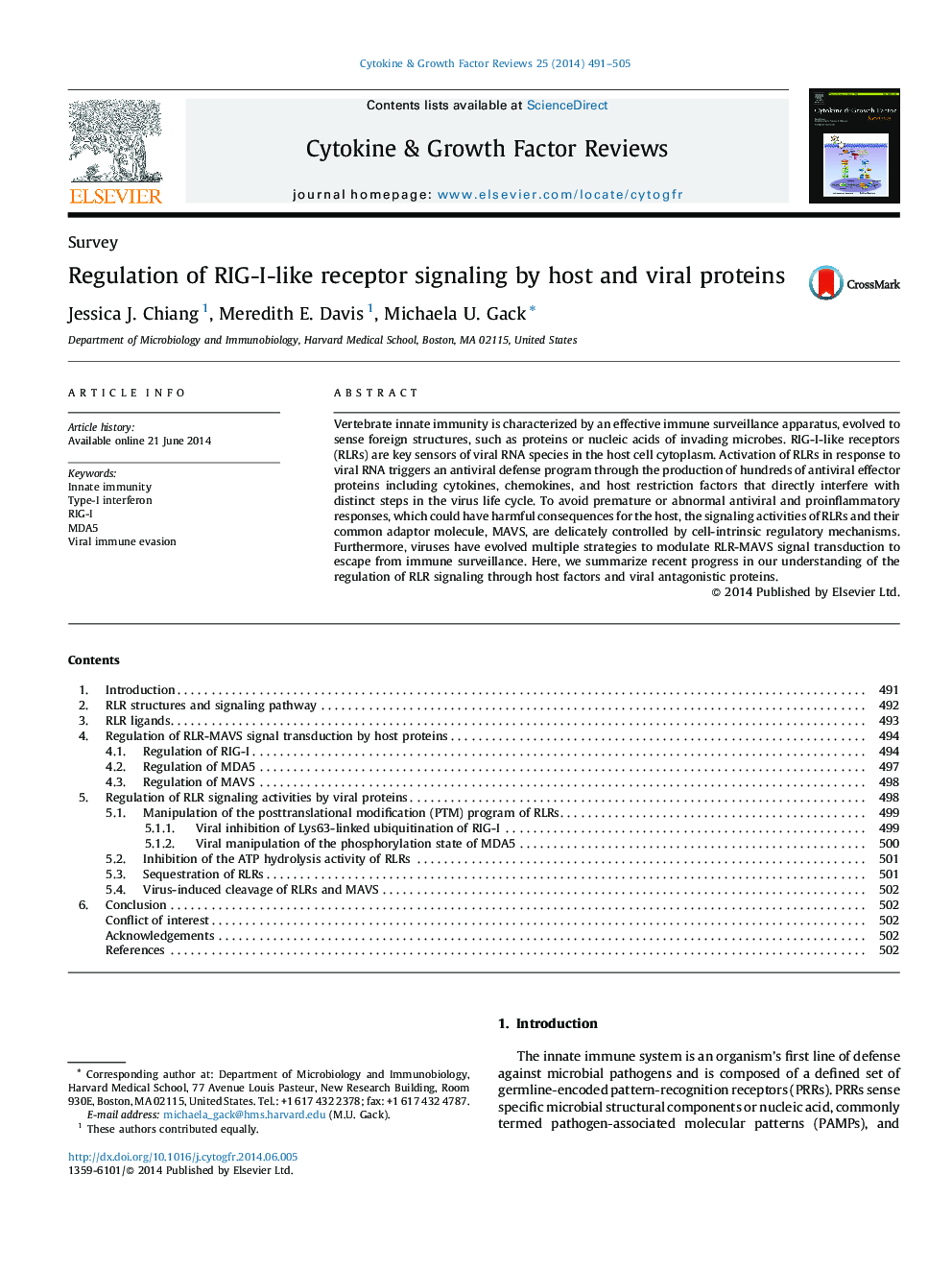| Article ID | Journal | Published Year | Pages | File Type |
|---|---|---|---|---|
| 2170568 | Cytokine & Growth Factor Reviews | 2014 | 15 Pages |
Vertebrate innate immunity is characterized by an effective immune surveillance apparatus, evolved to sense foreign structures, such as proteins or nucleic acids of invading microbes. RIG-I-like receptors (RLRs) are key sensors of viral RNA species in the host cell cytoplasm. Activation of RLRs in response to viral RNA triggers an antiviral defense program through the production of hundreds of antiviral effector proteins including cytokines, chemokines, and host restriction factors that directly interfere with distinct steps in the virus life cycle. To avoid premature or abnormal antiviral and proinflammatory responses, which could have harmful consequences for the host, the signaling activities of RLRs and their common adaptor molecule, MAVS, are delicately controlled by cell-intrinsic regulatory mechanisms. Furthermore, viruses have evolved multiple strategies to modulate RLR-MAVS signal transduction to escape from immune surveillance. Here, we summarize recent progress in our understanding of the regulation of RLR signaling through host factors and viral antagonistic proteins.
